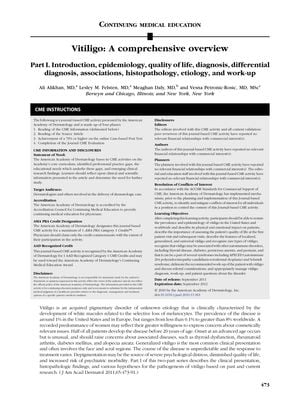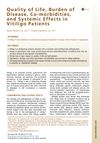Vitiligo: A Comprehensive Overview
August 2011
in “
Journal of the American Academy of Dermatology
”

TLDR Vitiligo is a skin condition causing white spots, more common in women, often starts before age 20, and can affect mental health.
The document from 2011 provides a comprehensive overview of vitiligo, an acquired pigmentary disorder with an unknown cause, characterized by the development of white macules due to the loss of melanocytes. The prevalence of vitiligo is about 1% in the United States and Europe, with global rates varying from less than 0.1% to over 8%. The condition shows a higher recorded incidence in women, possibly due to their greater concern for cosmetic issues. Vitiligo commonly begins before the age of 20, and while late-onset can occur, it is rare and may indicate other associated diseases like thyroid dysfunction, rheumatoid arthritis, diabetes mellitus, and alopecia areata. Generalized vitiligo, which often affects the face and acral regions, is the most common form. The progression of vitiligo is unpredictable, and treatment responses vary. The disorder can lead to significant psychological distress, reduced quality of life, and a higher risk of psychiatric issues. The document details the clinical features, histopathological findings, and proposes several pathogenesis hypotheses based on research available up to that time.




